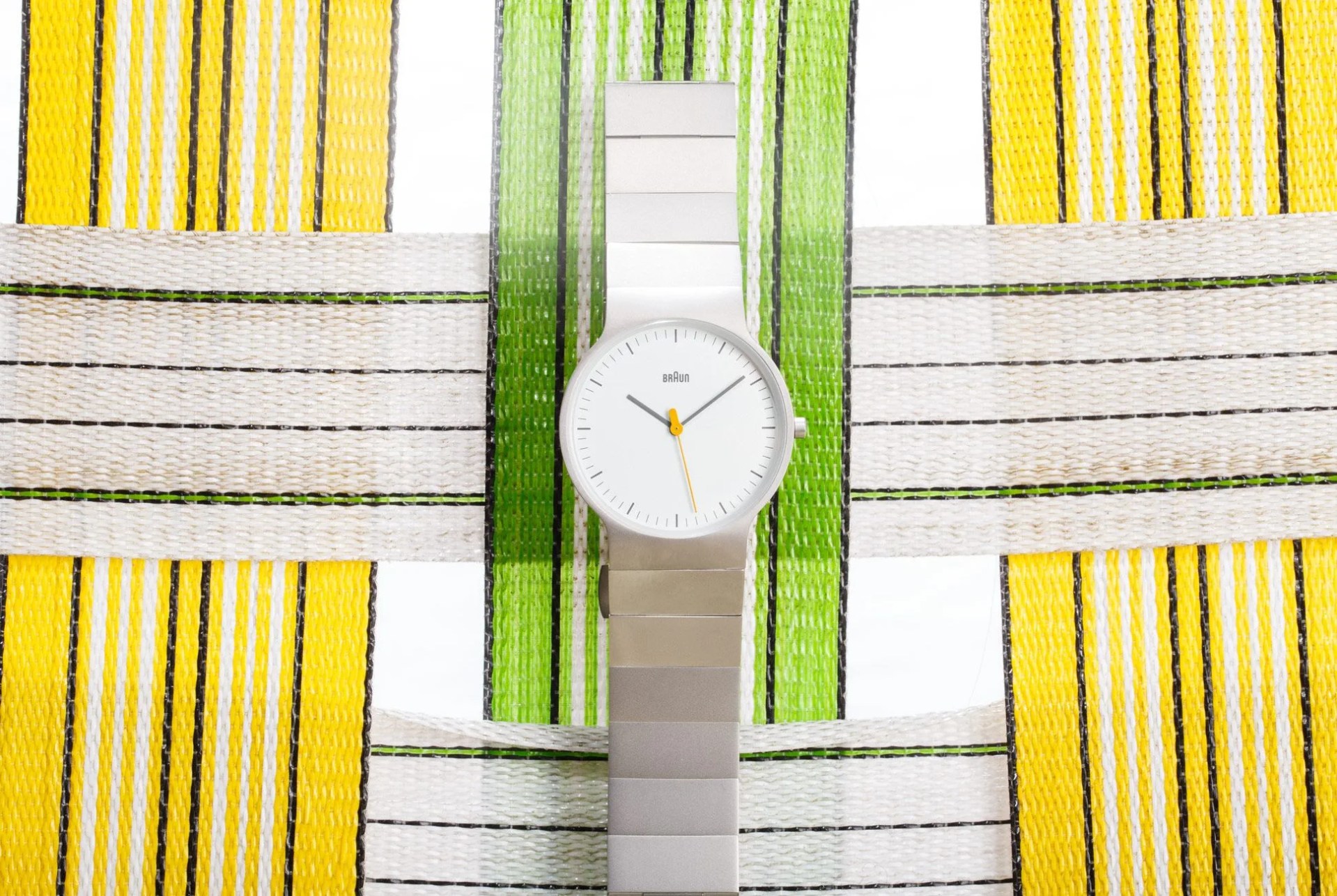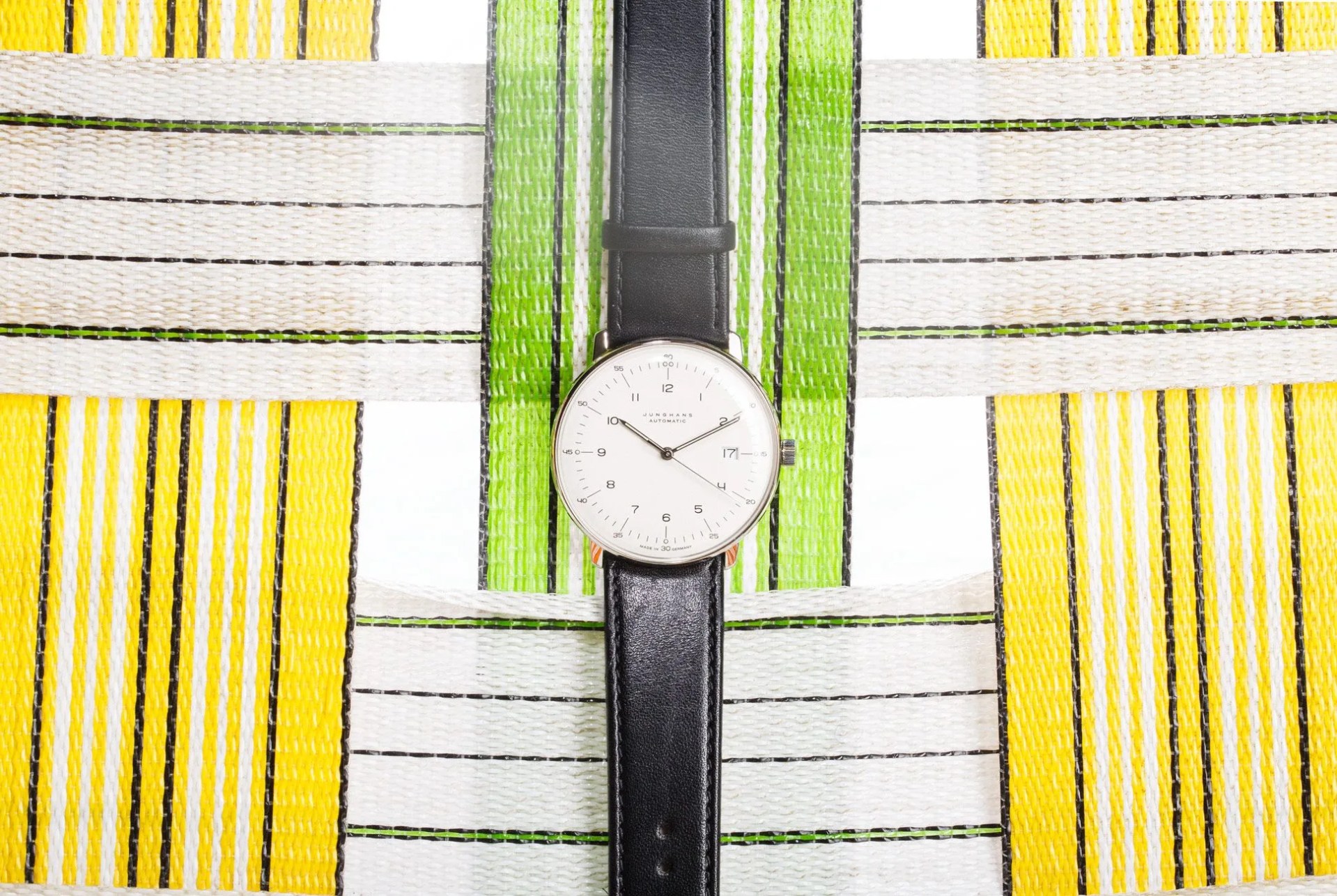In his New Yorker piece “Confessions of a Watch Geek,” writer Gary Shteyngart details a panic attack on a stalled N train, soothed by a mechanical Junghans with looks based off a design by Bauhaus student Max Bill. “Its no-frills, form-follows-function shape evoked civility in a time of chaos, a ticking intelligence in the face of a new inhumanity,” he wrote. Shteyngart, new to watch nerdery, would later spend over $4,000 on a Nomos Minimatik, another clearly Bauhaus-inspired watch.
“Bauhaus” has become something of a catch-all term to describe minimalist watches, especially German ones, but Bauhaus was a school rather than a specific style. Formed in 1919 and shut down by the Nazi regime in 1933, Staatliches Bauhaus had a short run but a profound effect on modern art, architecture and industrial design. Its guiding principles were influenced by design ethe like Russian-born constructionism and English novelist and designer William Morris’s view that form and function should be viewed as the same thing.
In a world that seems to grow increasingly chaotic by the hour, order and simplicity in the form of a simple watch feel like a small and unlikely source of tranquility.
In a time when consumer and industrial design was characterized by ornate flourishes (think Art Deco), it was a revolutionary concept. Of course, today our idea of “good design” is almost entirely derived from that. Our omnipresent Apple products are the result of Steve Jobs’ budding fascination with the Bauhaus maxim in the early ’80s; architect Barbara Bestor considers the next wave of great interior decor to be “neo-Bauhaus.”
You could say the same for watches, too. At least when you consider the sheer amount of young micro brands today that attempt to embody the same aesthetic. Bauhaus-inspired timepieces are nothing new, dating back to the same timeframe in which Staatliches Bauhaus operated. But given Bauhaus’s continuing influence on our surroundings, they feel especially zeitgeist-y — even when watch enthusiasts are (for better and worse) obsessed with complications and tool watches from the mid-20th century that attempt to be more than a time-telling apparatus.
And that’s fine. But Bauhaus’s allure is probably best summed up in Shteyngart’s subway freakout. When the world seems to grow increasingly chaotic by the hour, order and simplicity can come together in the form of a simple watch, a small and unlikely source of tranquility. And finding it is easy. There is the aforementioned abundance of young brands — but executing a Bauhaus-influenced watch design is deceptively tricky, so the classics are undoubtedly the timepieces to pursue. These three from Braun, Junghans and Nomos are emblematic of the style and have strong ties to the school that so greatly influenced the aesthetic of our modern world.



